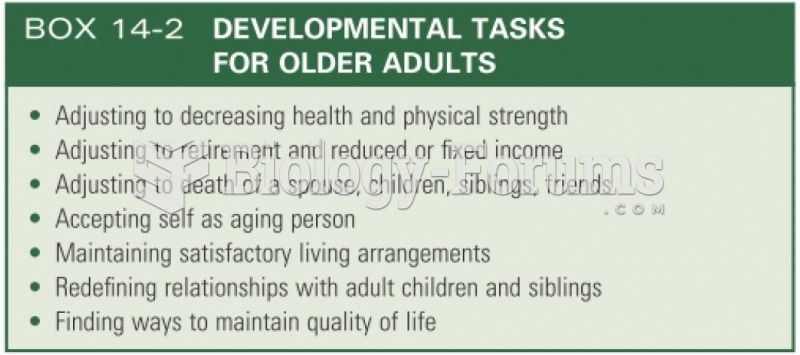Answer to Question 1
D
A characteristic of a good coper is one who has good communication with others; however, im-mediately after the older adult's death, this family is ineffectively coping with the loss. To facili-tate the family with decision making, the nurse asks one family member to consider calling another person who will likely help the family face the reality of the death. After making the suggestion, the nurse ensures that the family has enough time for holding behaviors, to prepare the body if they wish, and to express their grief in privacy and in their own way. Effective coping includes a focus on the solutions rather than on the problems. The nurse avoids recommending funeral homes, which could be a potential conflict of interest. The family can be unable to solve the problem alone because of ineffective coping in the immediate mourning period.
Answer to Question 2
B, C, D, E
a. Incorrect. Joint instability can be common among older adults.
b. Correct. Decreased muscle bulk due to sarcopenia contributes to the loss of balance be-cause muscles used to maintain balance are smaller and weaker.
c. Correct. Older adults tend to lose joint flexibility. As a result, balance is more difficult to maintain because the body is stiffer and less able to compensate when the weight shifts off center.
d. Correct. Abnormal joint movement from a life of normal joint wear and tear contributes to loss of balance by abnormally aligning bones to create imbalance. In addition, the joint abnormalities are likely to cause pain, which can cause an individual to favor that area and therefore contributes to imbalance.
e. Correct. Decreased tissue regeneration contributes to muscle wasting.
f. Incorrect. Although impaired glucose metabolism can occur with increasing age, glucose metabolism can be only indirectly related to balance, such as if an older adult becomes dizzy.






